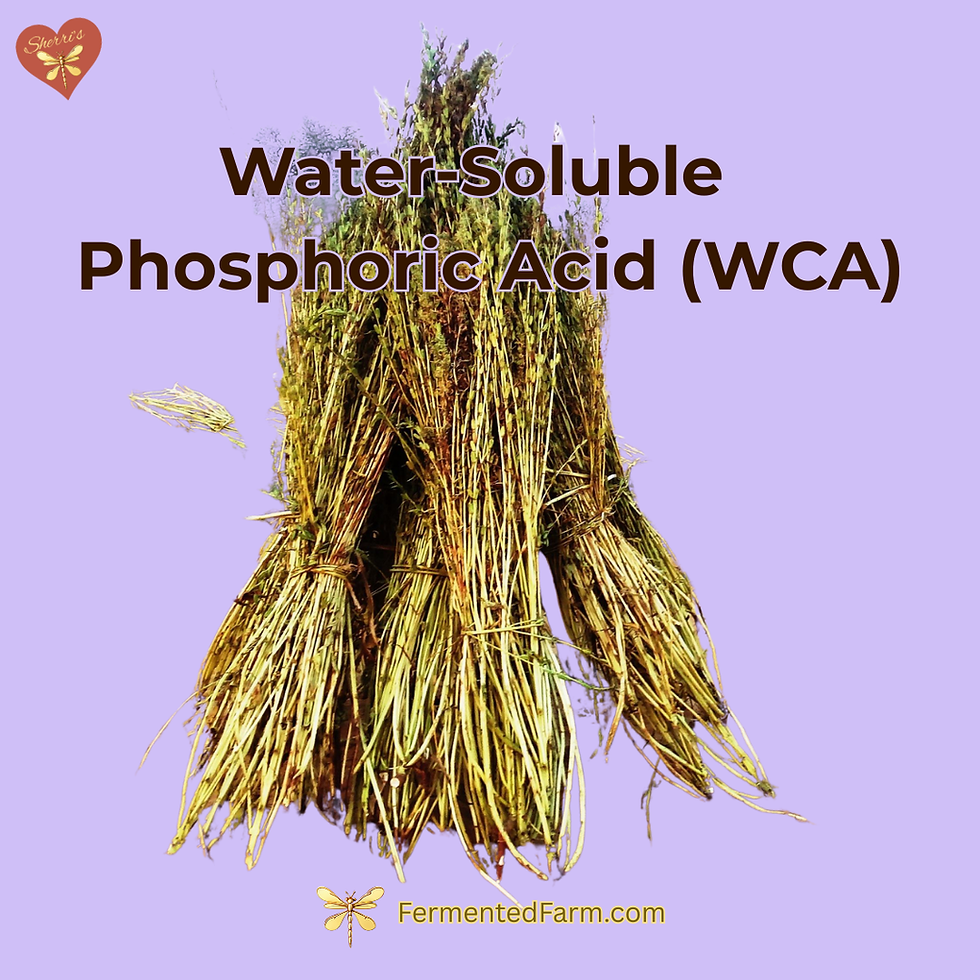INDIGENOUS MICRO-ORGANISMS (IMO) COLLECTION SITE Under Plants with Sugar In the Roots In Areas that are Slightly Barren
- Sherri Miller

- Apr 24, 2024
- 3 min read

COLLECT UNDER PLANTS WITH SUGAR IN THE ROOTS IN AREAS THAT ARE SLIGHTLY BARREN
The third criterion to consider when choosing an IMO collection site is a bit of a conundrum. Master Cho talks about collecting from a site under plants with “sugar in the roots.” Yet his most well-known advice about IMO collection sites is to find places higher in elevation, where there are fewer nutrients. These conditions are not exclusive. Let’s clear up the confusion.
First of all, what does Master Cho mean by collecting under plants that have “sugar in the roots?” Cho is referring to areas with high plant exudates.
Exudates can include sugars, organic acids, amino acids, and other compounds secreted into the soil by plants to influence microbial activity and nutrient availability. Since plants excrete these sticky, sugary substances to attract microbes, such areas would have high concentrations of soil microbes. They can be said to have “sugar in the roots.”
It makes perfect sense to collect from areas that are naturally high in soil microbe concentrations. How, then, could finding a sight that is also more barren, such as a location at a higher elevation, be of benefit?
Master Cho tells a story about a father choosing a wife for his son. If he chooses a rich daughter-in-law, his son's wife will not work hard. She will be lazy and expect luxuries. His son will have to work hard to make a rich wife happy. On the other hand, if the father chooses a poor daughter-in-law, his son's wife will be hardworking and faithful. The poor wife will make a good partner for his son, and they will be a happy couple.
The combination of erosion, parent material, climate, and vegetation differences can result in soils at higher elevations being lower in nutrients than those found at lower elevations within the same location. The lack of nutrients and harsher conditions mean that microbial communities at elevation have to be stronger to survive. Therefore, it makes perfect sense to collect from areas that house the strongest soil microbes. Higher elevation sites are where to find the poor daughter-in-law.
Master Cho recommends finding a location that is ideally 150-200m higher in elevation than the planting field. Remember to stay local. Collections should always be within the same watershed. Never cross a body of water, even if dry.
It is best to collect from areas that are both naturally high in soil microbe concentrations (areas with “sugar in the roots”) and from areas that house the strongest soil microbes (the poor daughter-in-law).
To find a plant with “sugar in the roots,” Master Cho recommends collecting from near the roots of bamboo or broadleaf trees, from leaf molds, from the hill near the working field, or near the roots of lawn grass.
Look for plants that are highly productive, with a lot of leaf fall. Collection areas high in root sugar tend to show white mycorrhizal fungi in the layers of leaves, although this might not be visible in dry weather.
To find collection sites in areas that are slightly barren, elevation is not the only way to find a location with stronger microbes. Good collection sites also include spots that are drier than surrounding areas or otherwise under more stress. An urban environment is a good example.
How can these two concepts be combined? Find a highly productive specimen of plant, bush, tree, or stand of grass, with a lot of leaf fall and, ideally, where white mycorrhiza can be visually seen. Look for these plants in locations that are higher in elevation, more arid, or that exhibit other stress factors. Perhaps they are right there in your city or suburb. Don’t forget that the most important factor in choosing a site is to find one that is as local as possible.




Comments